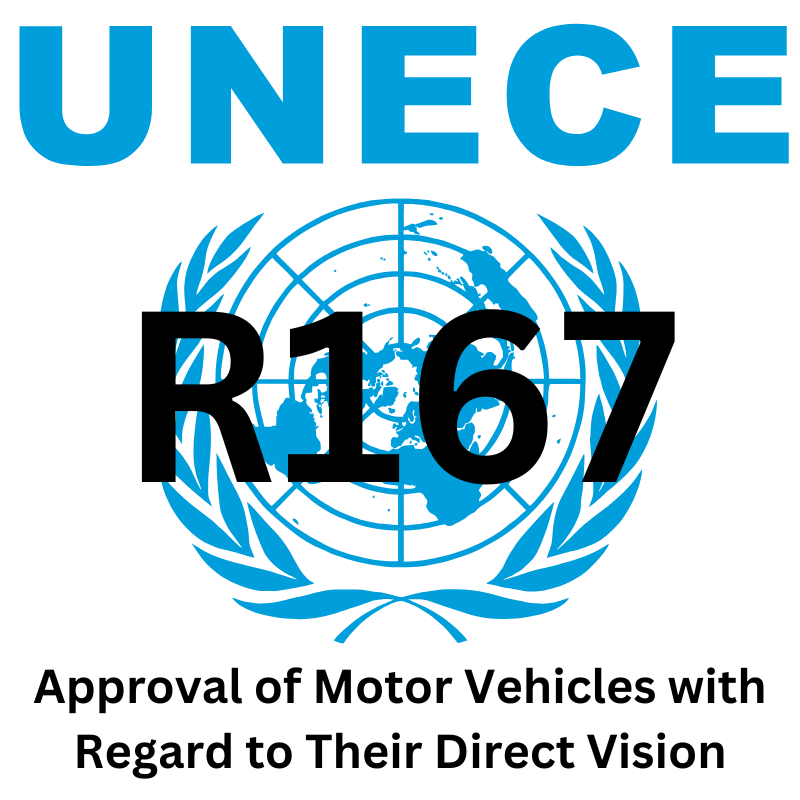Guide To: UNECE R167 - Approval of Motor Vehicles with Regard to Their Direct Vision
23 July 2023

Guide To: UNECE R167 - Approval of Motor Vehicles with Regard to Their Direct Vision
UN ECE Regulation No. 167 provides uniform provisions concerning the approval of motor vehicles with regard to their direct vision. The regulation aims to improve the visibility of vulnerable road users (VRUs), such as pedestrians and cyclists, by enhancing the driver's ability to see directly through the vehicle's windows without relying solely on indirect vision devices, like mirrors or cameras. This regulation plays a crucial role in reducing blind spots, particularly for larger commercial vehicles, during low-speed manoeuvres such as turning or moving off from rest.
Scope of the Regulation
UN ECE R167 applies to:
- Motor vehicles in categories M2, M3, N2, and N3. These categories primarily cover buses, trucks, and other large vehicles that are likely to operate in urban environments where interactions with vulnerable road users are frequent.
Key Features of UN ECE R167
Purpose of Direct Vision:
- The primary goal of the regulation is to reduce the blind spots around vehicles by ensuring that drivers can see vulnerable road users through direct vision rather than relying on mirrors or cameras. By improving direct vision, drivers can detect and respond more quickly to the presence of pedestrians and cyclists, reducing the risk of accidents.
Assessment of Direct Vision:
- The regulation defines the assessment volume around the vehicle where vulnerable road users are most likely to be located. This area is divided into front, nearside, and offside zones. Vehicles are required to meet minimum visibility standards for each zone.
- Direct vision performance is quantified by measuring the visible volume from the driver's eye point (E-point). This ensures that a certain amount of the space around the vehicle is visible to the driver without any obstructions.
Classification of Vehicles by Direct Vision Levels:
Vehicles are assigned one of three direct vision levels (Levels 1, 2, and 3), based on their likelihood of operating in urban areas:
- Level 1: Vehicles that frequently operate in urban environments.
- Level 2: Vehicles that sometimes operate in urban areas but have specific operational limitations.
- Level 3: Vehicles that rarely operate in urban areas.
Different minimum visibility requirements are specified for each level, with more stringent requirements for Level 1 vehicles that are most likely to encounter vulnerable road users.
Test Procedures:
Exemptions and Special Considerations:
- The regulation allows for flexibility in cases where providing direct vision may conflict with other operational requirements, such as high ground clearance for off-road vehicles or specific cab designs. Vehicles in such cases may still comply with the regulation if alternative safety measures are in place.
Conclusion
UN ECE R167 is an important regulation aimed at enhancing road safety by improving the driver's direct vision, particularly in large vehicles that operate in urban areas. By setting standards for the visible volume around vehicles, the regulation helps to minimize blind spots and protect vulnerable road users. Manufacturers of buses, trucks, and other heavy vehicles must ensure their vehicles comply with this regulation to reduce the risk of accidents and improve safety in urban environments.